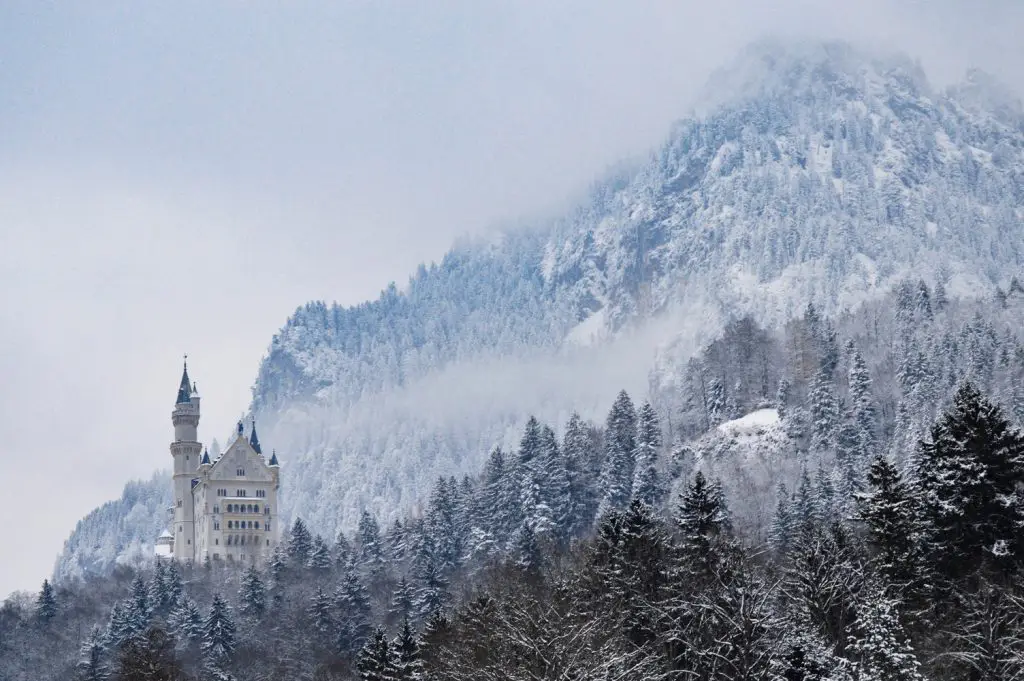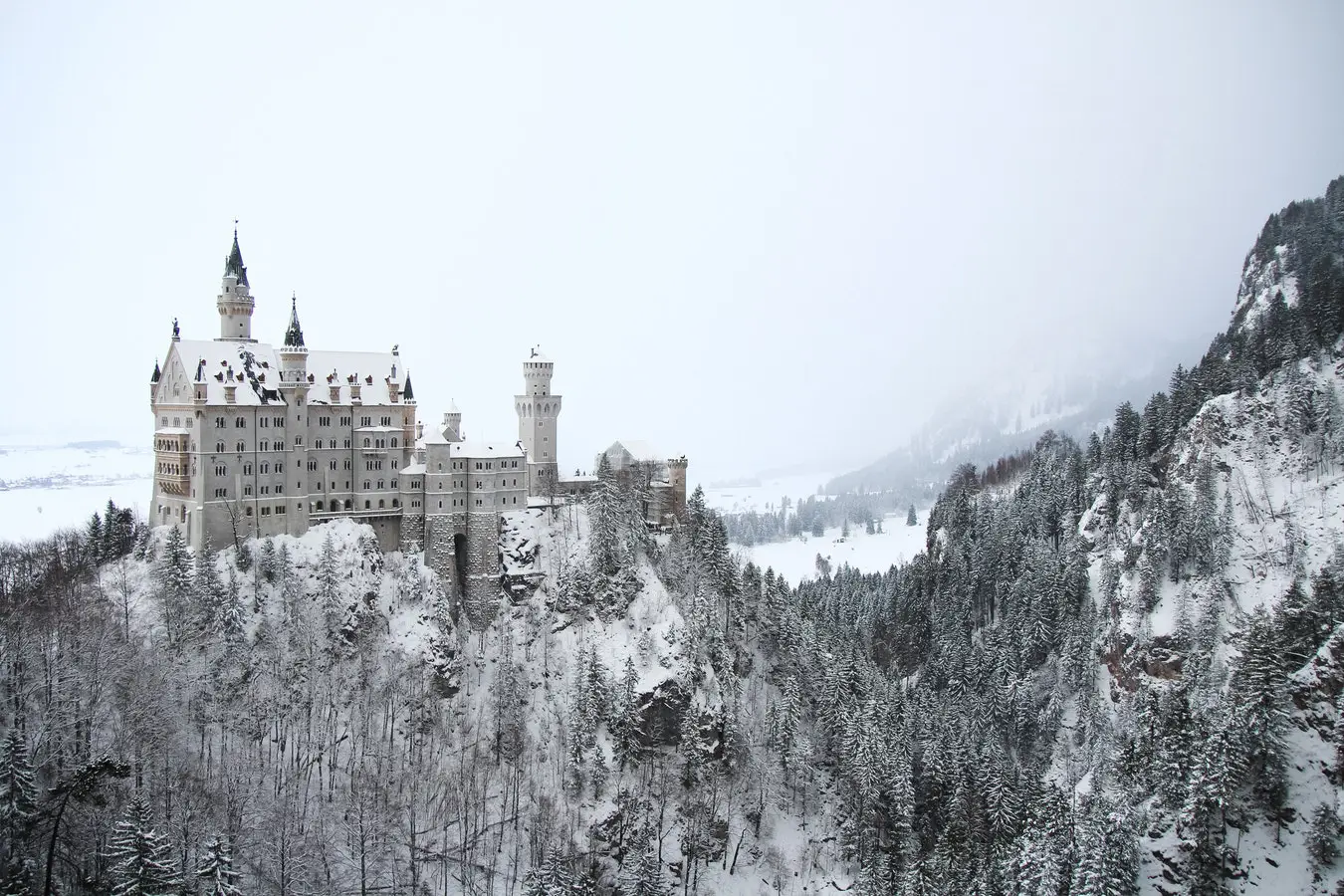Expert travel storyteller Jordan Adkins, founder of InspiredByMaps.com, brings a decade of adventures across 101 countries and 450+ UNESCO sites into rich, off-the-beaten-path narratives, melding ecological expertise with genuine, seasoned travel insights. His full bio can be found here.
When the temperature dips and the prices drop that’s the time to act…Europe is now all about the locals and with that in mind, I’ve made a guide for things to do in Germany in the winter! It’s not all about fun in the sun you know…
The prices are lower, the air is crisper and the hoards of tourists are nowhere to be seen. The same can be said about a lot of places of course, but Germany has one thing that most places don’t – Weihnachtsmärkte!
The famous German Christmas markets (there is over 1500 of them!) with their gorgeous lights, festive atmosphere and Glühwein, a wonderfully spiced substance more commonly known as Mulled Wine which will surely warm your heart and soul. Just make sure you these winter items to keep you warm!
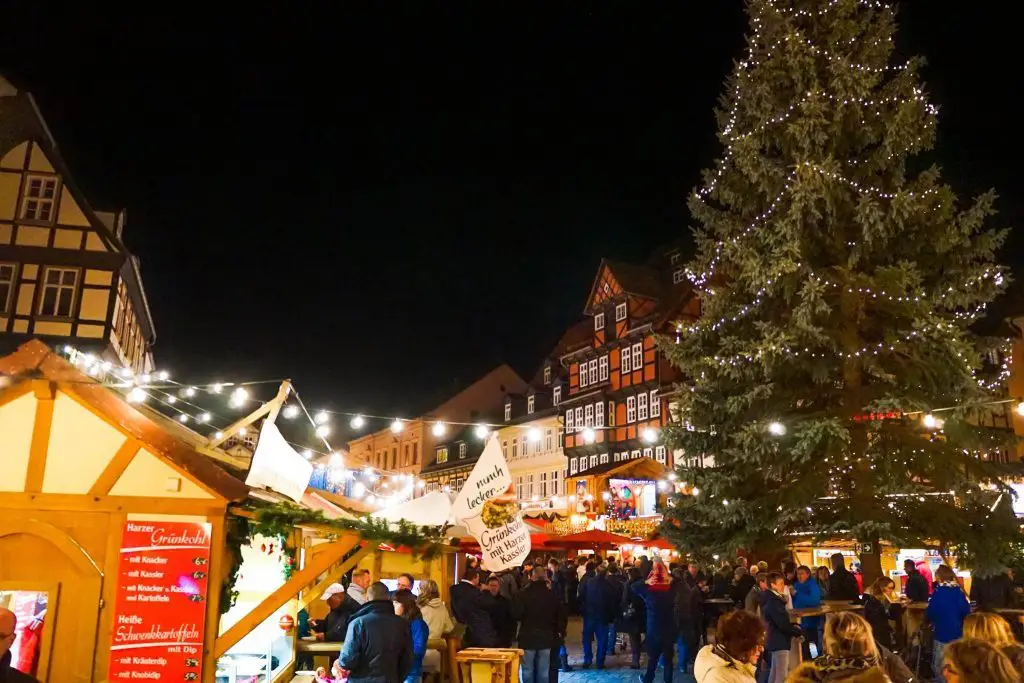
For me, this alone was enough to make up for the cooler temperatures, shorter opening hours and the ridiculously short daylight hours!
I thought I would provide a summary of the places I visited with the best photos to inspire you – There are so many places to explore but some of these are very off the beaten track as it were (thanks UNESCO!) and maybe you have never heard of them and want to visit them yourself!
Enjoy!
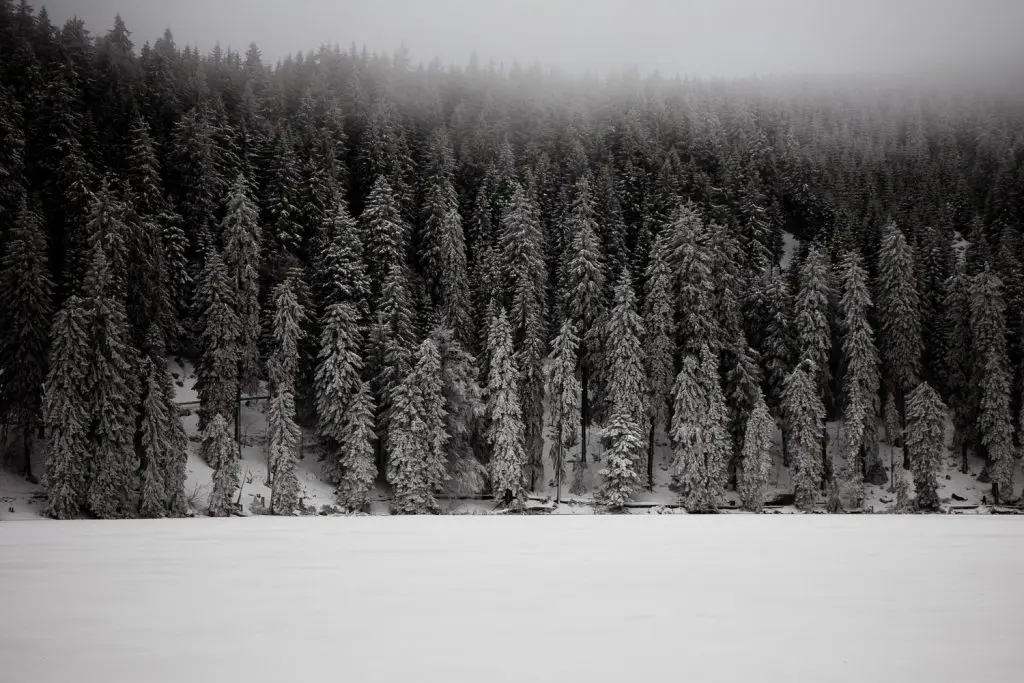
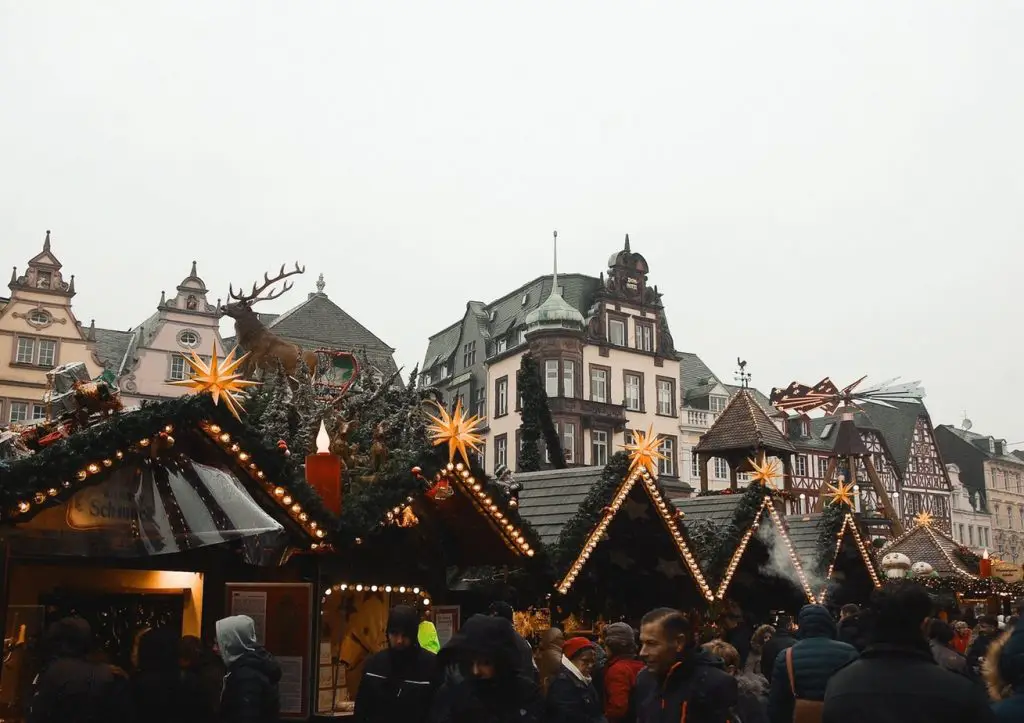
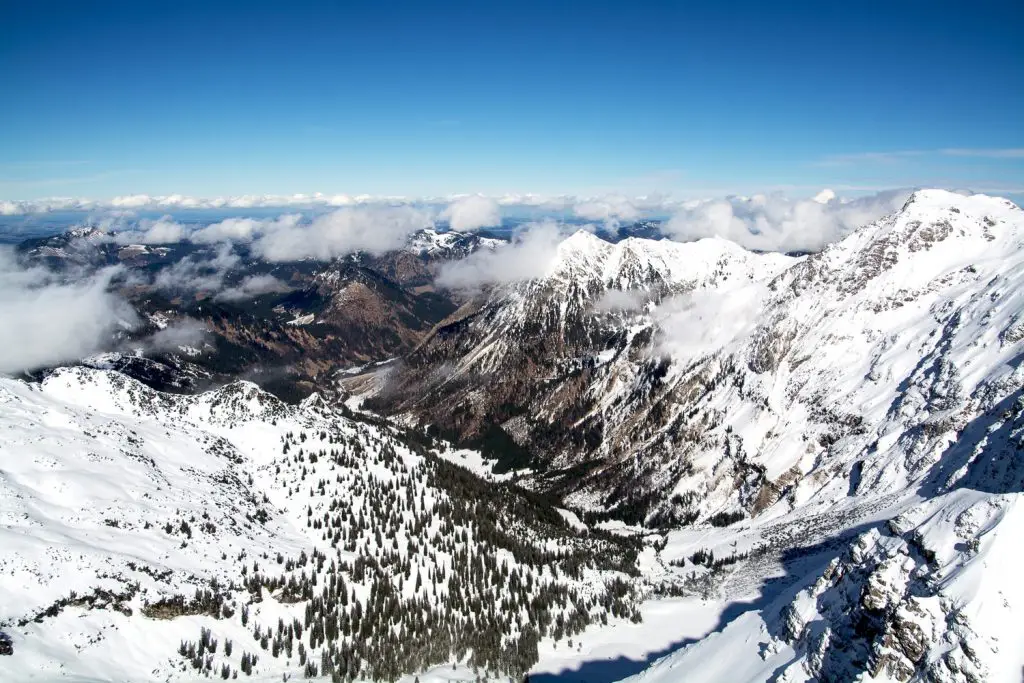
Page Contents
Berlin
Berlin’s incredible Museum Island – Five world-renowned museums on an island in River Spree, right in the middle of Berlin! Top of the list for things to do in Germany in winter when the tourists are gone!
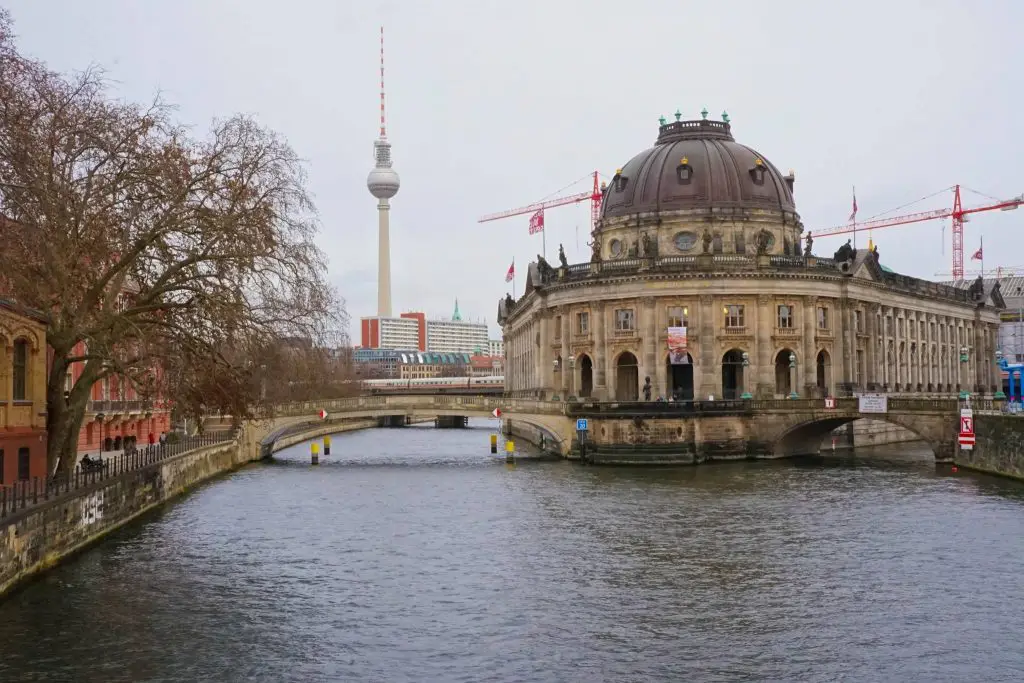
One of the few remaining sections of the Berlin Wall … I didn’t get out there but be sure to visit the East Side Gallery if you are interested!
The Memorial to the Murdered Jews of Europe, also known as the Holocaust Memorial, is a memorial in Berlin to the Jewish victims of the Holocaust. “Those who cannot learn from history are doomed to repeat it” – The Memorial to Homosexuals Persecuted Under Nazism which I talk about here…
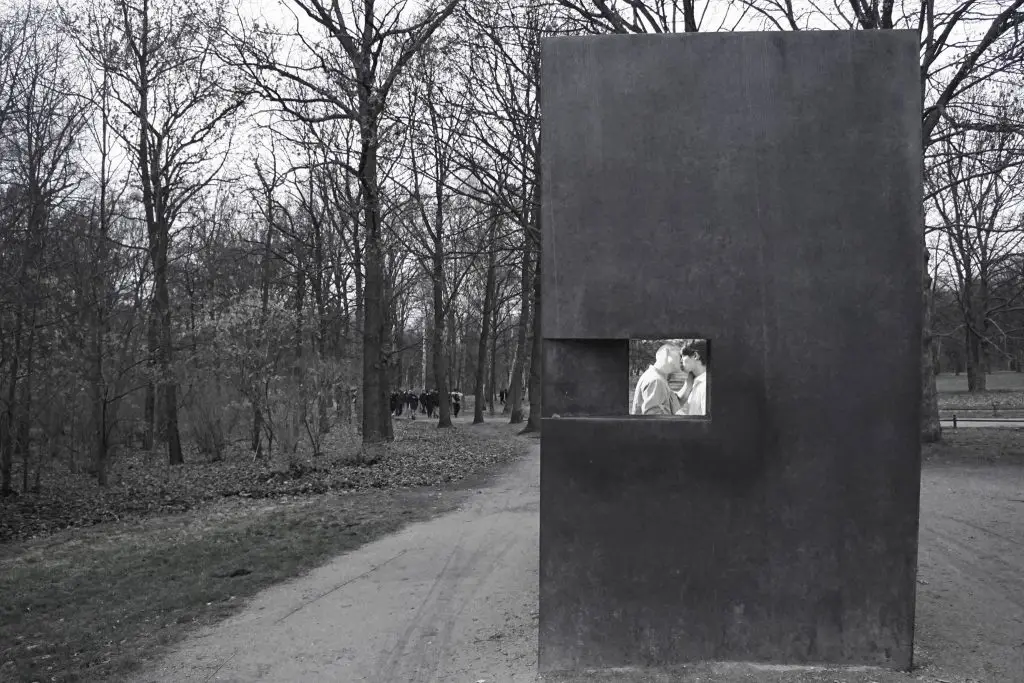
Brandenburg Gate – One of Berlin’s most famous sites. I had to laugh how the statue (Quadriga) on top was taken by Napoleon but in 1814, when the Prussian army descended on Paris after Napoleon’s defeat, that the Quadriga was reclaimed and returned to its rightful home.
However, an iron cross was added to make the statue the goddess of victory and the square was renamed Pariser Platz so that ‘Victory would always be had over Paris!’
Who says German’s don’t have a sense of humor! (Most of the best German films actually – they are all rather comedy-less!)
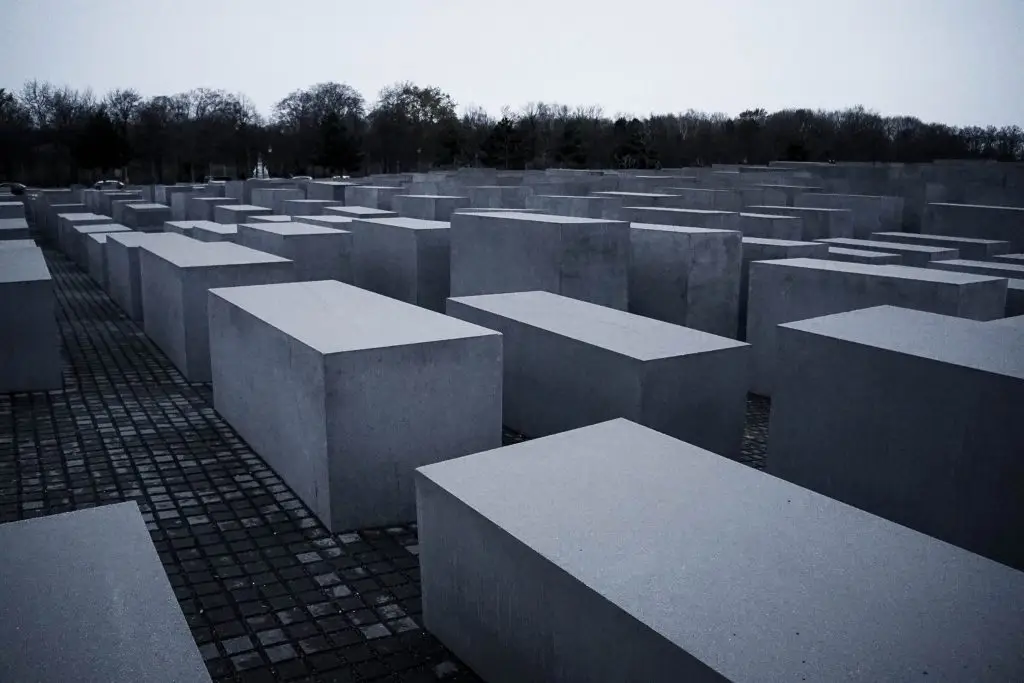
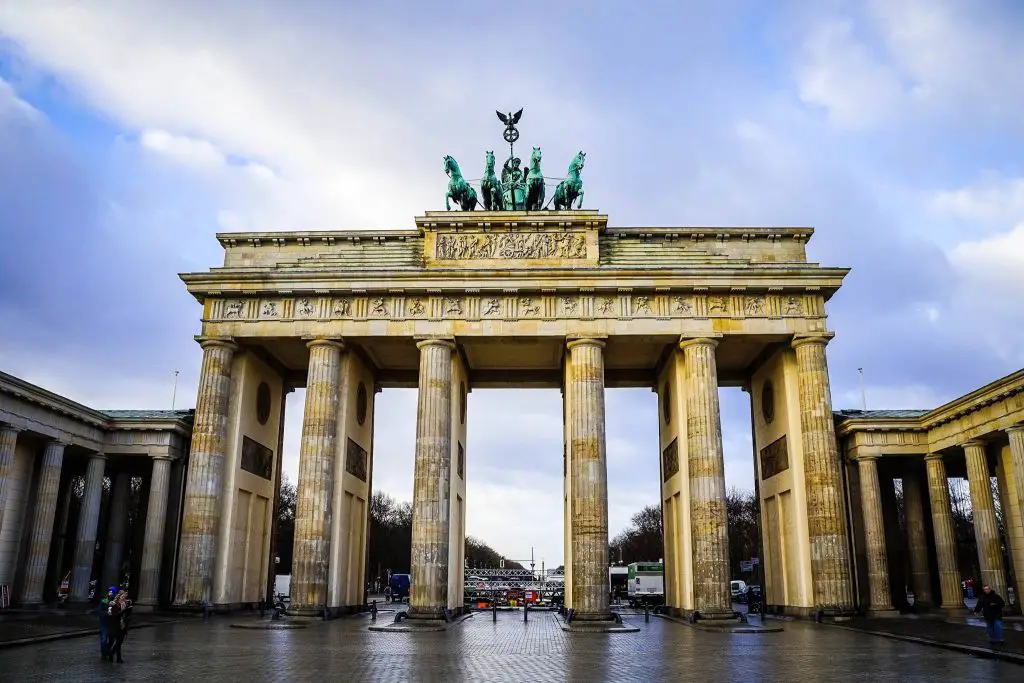
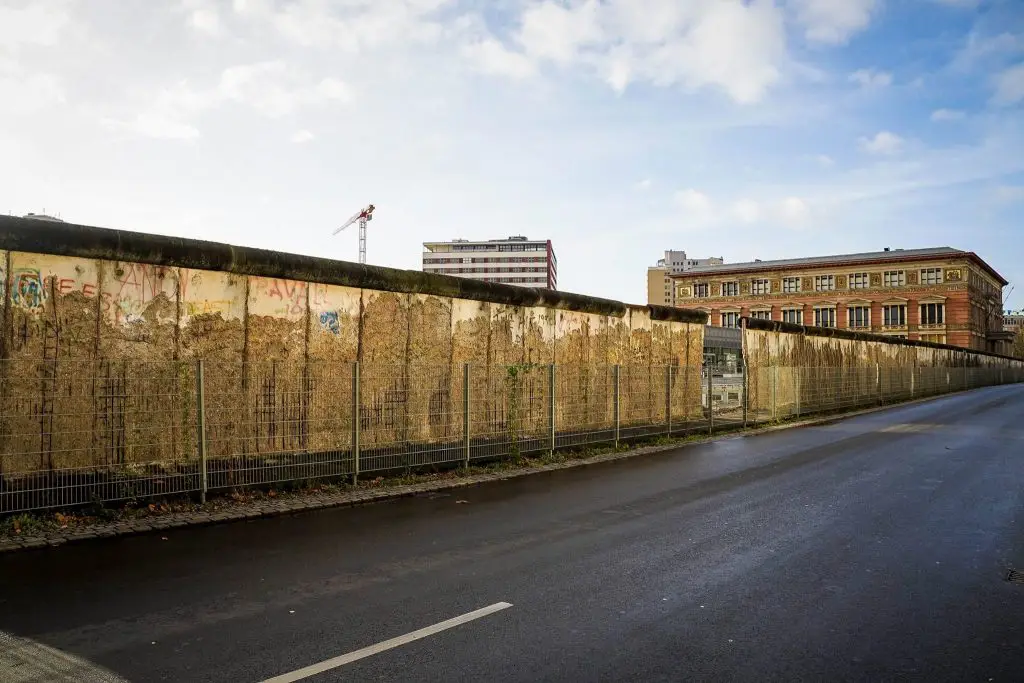
Potsdam
Palace Sanssouci is the former summer palace of the King of Prussia, in Potsdam and is the German rival of Versailles.
With 500 ha of parks and 150 buildings erected between 1730 and 1916, Potsdam’s complex of palaces and parks constitutes an artistic combination, whose eclectic nature strengthens its sense of uniqueness.
Potsdam continues into the district of Berlin-Zehlendorf, with the palaces and parks lining the banks of the River Havel and Lake Glienicke.
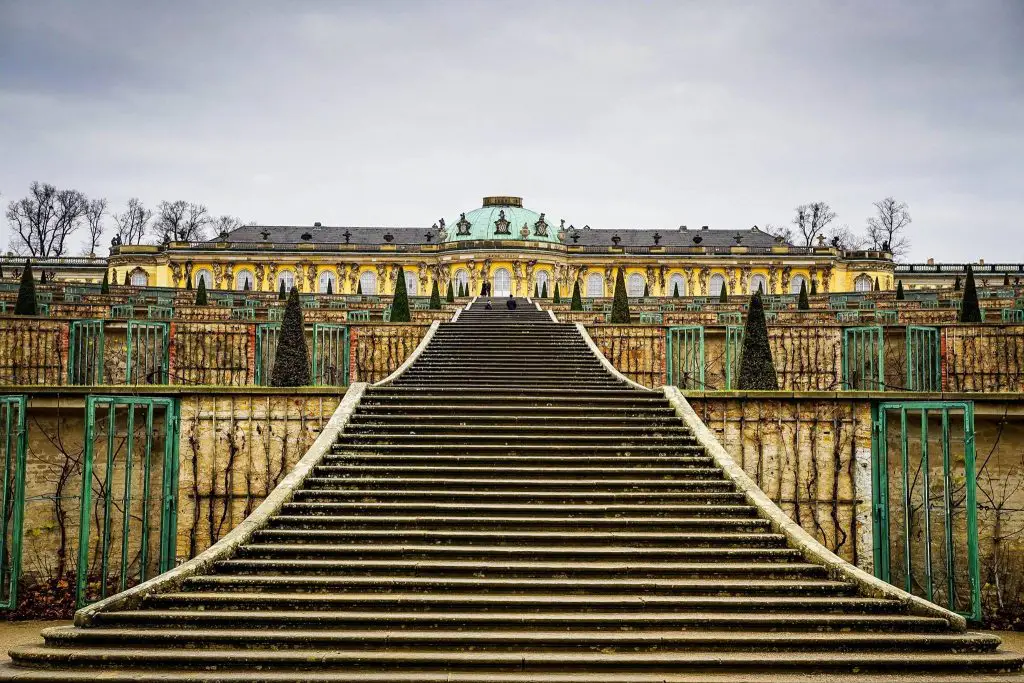
Wittenburg
Melanchthon’s house in Wittenberg, a fellow reformer of Martin Luther who posted his famous ’95 Theses’ on 31 October 1517 on the church of this city down the road launching the Reformation and a new era in the religious and political history of the Western world.
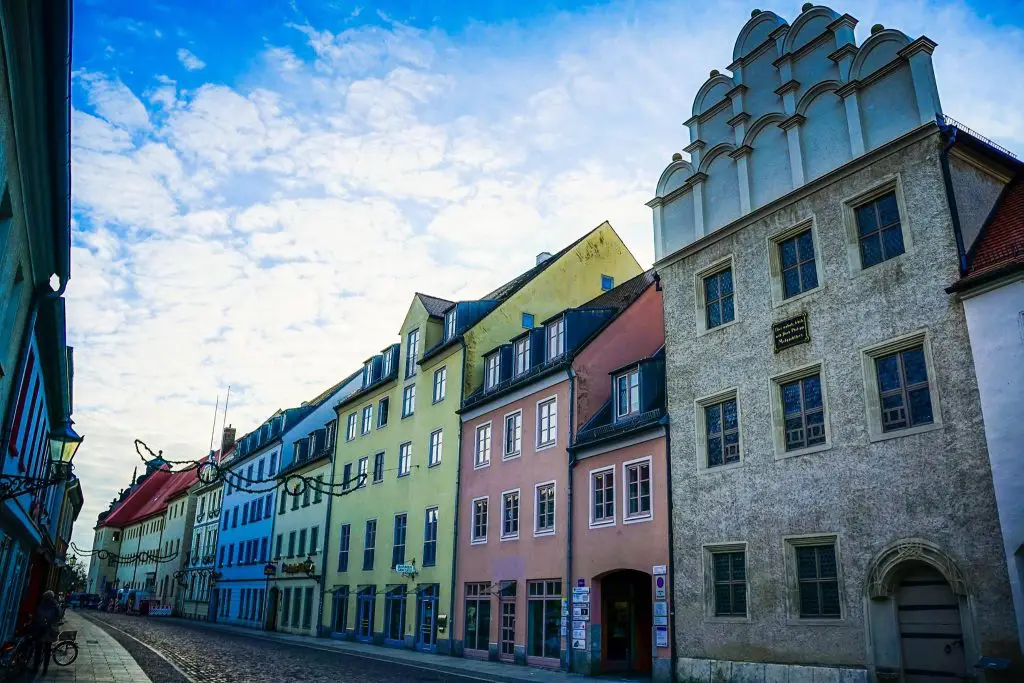
Wörlitz
The Dessau-Wörlitz Garden Realm, a UNESCO site that is hard to get to but well worth the visit. So peaceful and serene, a perfect place to contemplate life.
The Garden Kingdom of Dessau-Wörlitz is an exceptional example of landscape design and planning of the Age of the Enlightenment, the 18th century.
Its diverse components – outstanding buildings, landscaped parks and gardens in the English style, and subtly modified expanses of agricultural land – serve aesthetic, educational, and economic purposes in an exemplary manner.
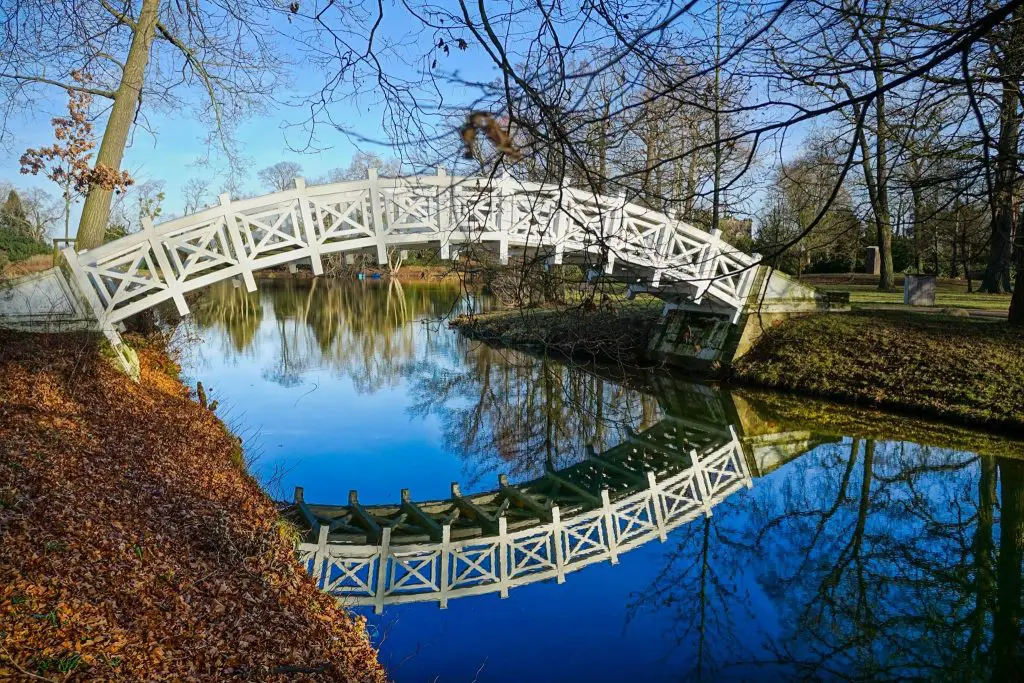
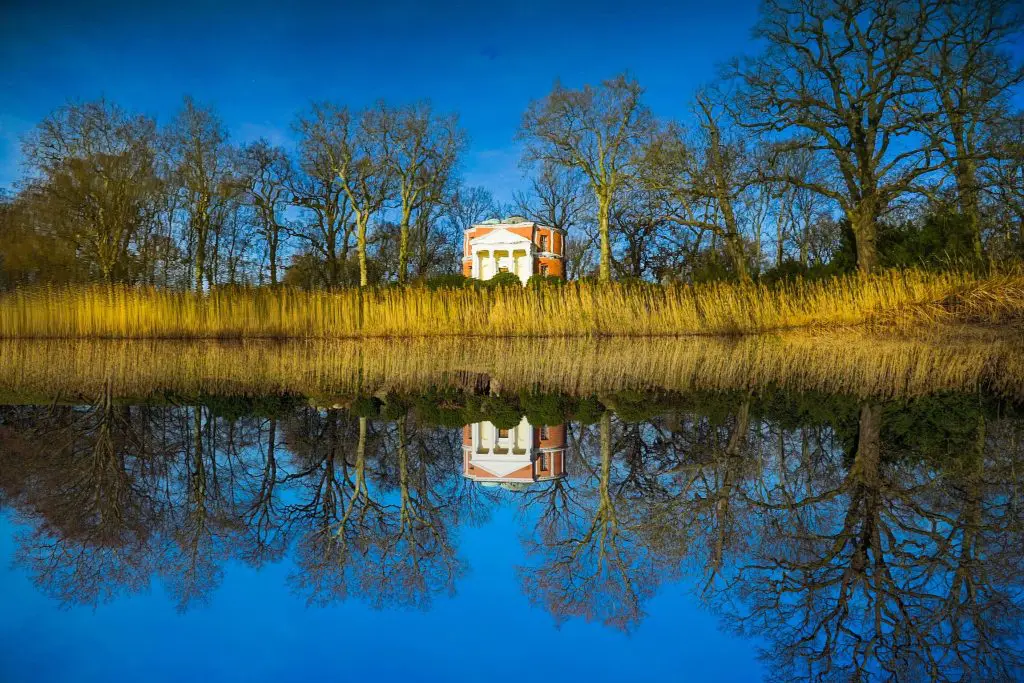
Quedlinburg
A peaceful sunset over Quedlinburg old town…One of the most peaceful things to do in Germany in Winter, and they also host one of the most authentic and beautiful Weihnachtsmärkte in the whole of Europe!
Quedlinburg, in the Land of Sachsen-Anhalt, was a capital of the East Franconian German Empire at the time of the Saxonian-Ottonian ruling dynasty.
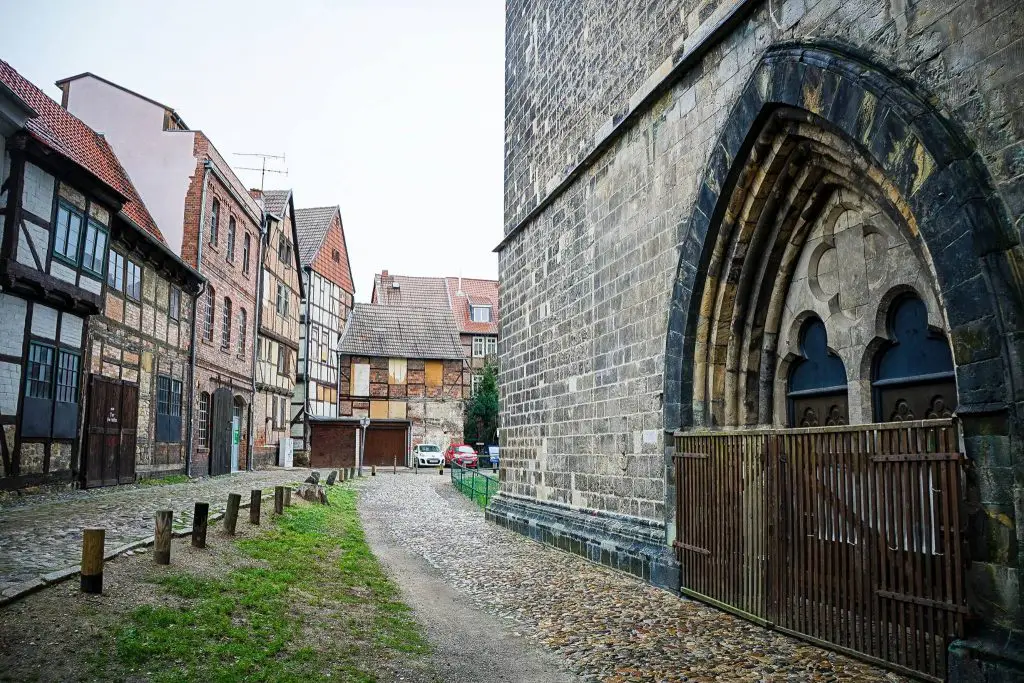
It has been a prosperous trading town since the Middle Ages. The number and high quality of the timber-framed buildings make Quedlinburg an exceptional example of a medieval European town.
The Collegiate Church of St Servatius is also considered one of the masterpieces of Romanesque architecture and should not be missed.
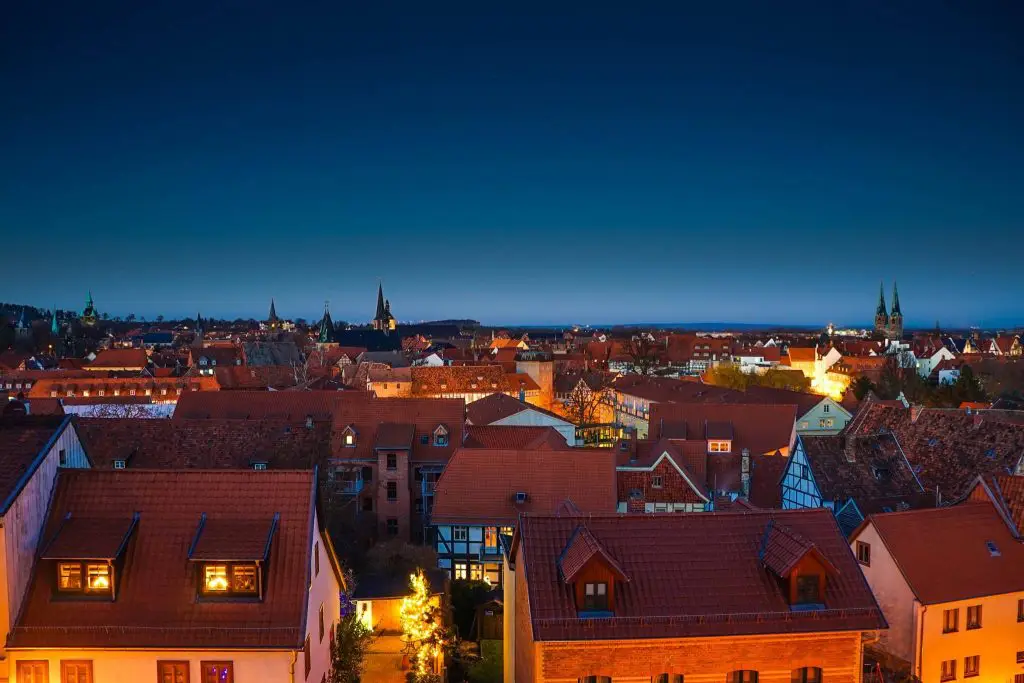
Goslar
Amazing old town…Interesting to see how the town utilized the river in the middle ages to change their fortunes and that of their city!
The Upper Harz mining water management system, which lies south of the Rammelsberg mines and the town of Goslar, has been developed over a period of some 800 years to assist in the process of extracting ore for the production of non-ferrous metals. Its construction was first undertaken in the Middle Ages by Cistercian monks, and it was then developed on a vast scale from the end of the 16th century until the 19th century.
It is made up of an extremely complex but perfectly coherent system of artificial ponds, small channels, tunnels, and underground drains. It enabled the development of water power for use in mining and metallurgical processes and today Goslar still a major site for mining innovation in the western world.
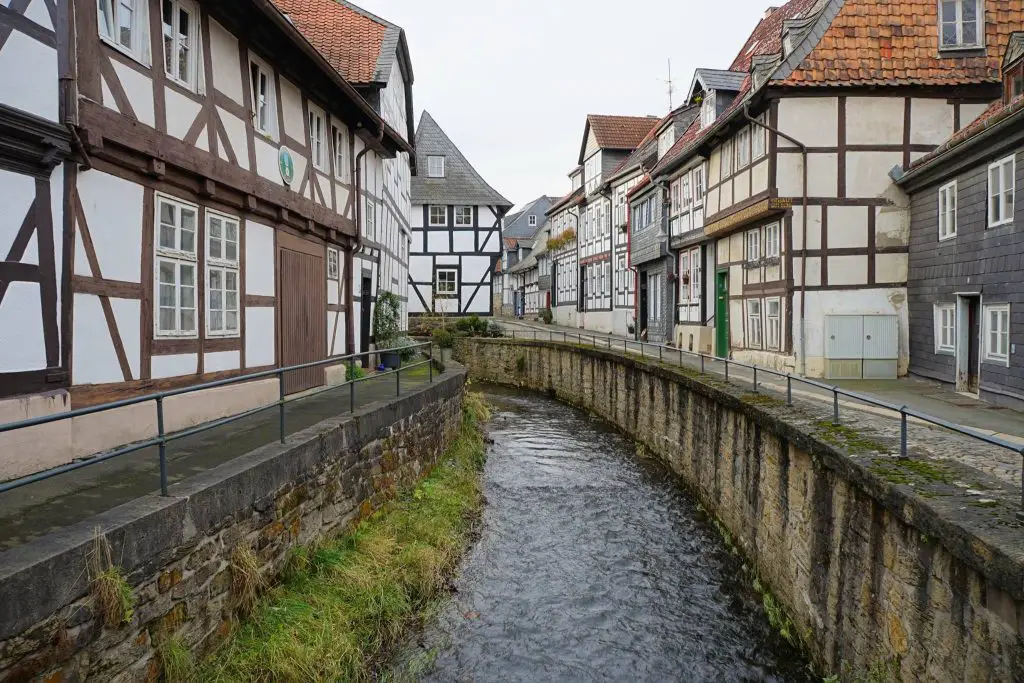
Hildesheim
One of the most inspiring Church’s I have ever been in… St Mary’s Cathedral should be on your list for sure!
Clearly, I also cannot get enough of the Weihnachtsmärkte which were such a highlight! You almost don’t need any other things to do in Germany in winter!
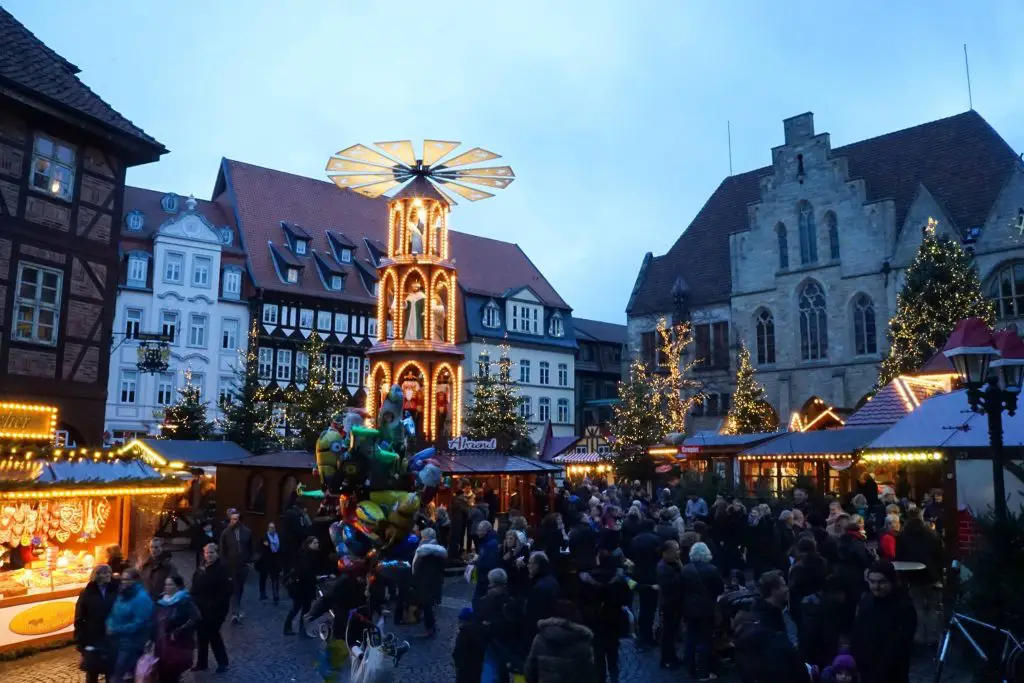
Famed here is the UNESCO-listed St Michael’s Church built between 1010 and 1020 on a symmetrical plan with two apses that was characteristic of Ottonian Romanesque art in Old Saxony.
Its interior, in particular the wooden ceiling and painted stucco-work, its famous bronze doors and the Bernward bronze column, are – together with the treasures of St Mary’s Cathedral – of exceptional interest as examples of the Romanesque churches of the Holy Roman Empire.
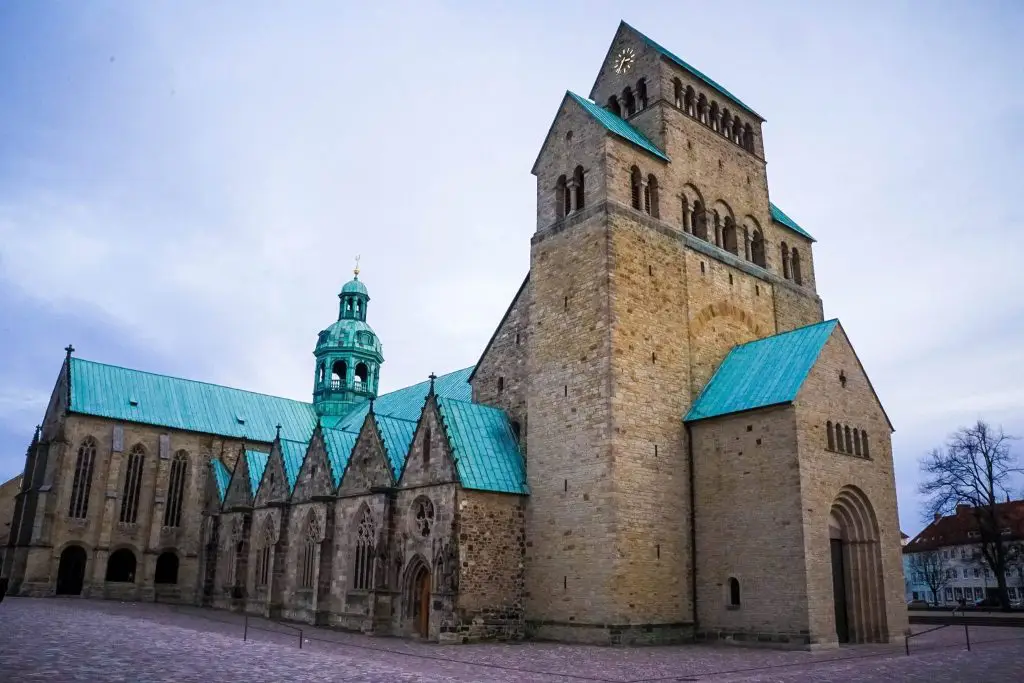
Alfeld
Fagus Factory in Alfeld is a landmark in the development of modern architecture and industrial design. Serving all stages of manufacture, storage, and dispatch of lasts used by the shoe industry, the complex, which is still operational today.
With its groundbreaking vast expanses of glass panels and functionalist aesthetics, the complex foreshadowed the work of the Bauhaus school and is a landmark in the development of architecture in Europe and North America.
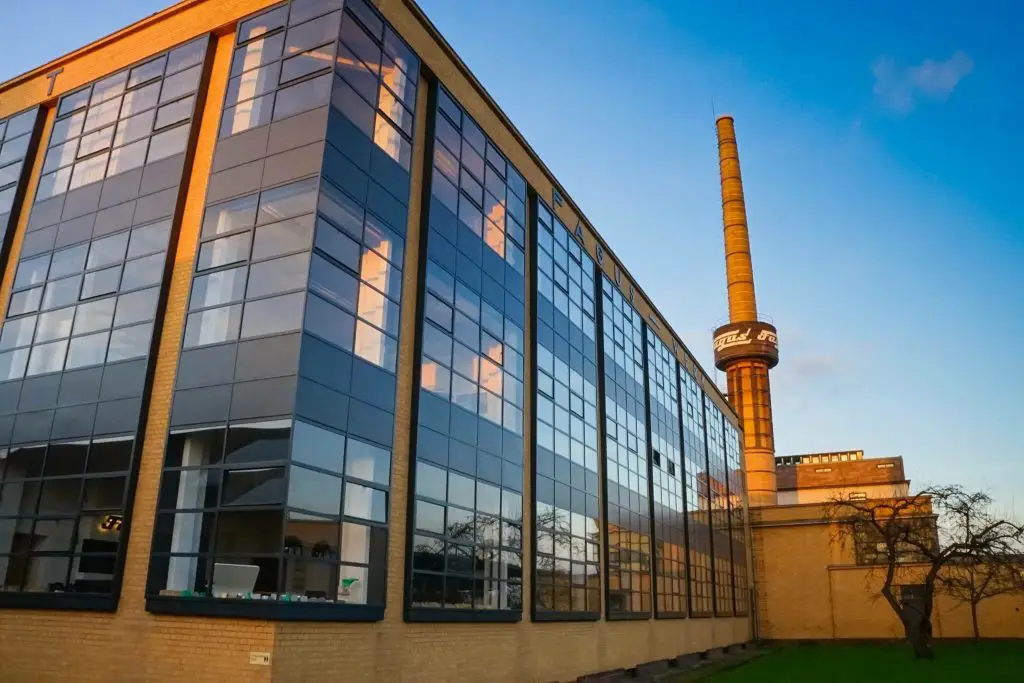
Höxter
The former Benedictine abbey of Corvey … A little bit disappointing for me to be honest, but I have seen many many Abbey’s. If you haven’t then is a must, otherwise, its very far out so skip it!
The site is located along the Weser River on the outskirts of Höxter where the Carolingian Westwork and Civitas Corvey were erected between AD 822 and 885 in a largely preserved rural setting. The Westwork is the only standing structure that dates back to the Carolingian era, while the original imperial abbey complex is preserved as archaeological remains that are only partially excavated.
The Westwork of Corvey uniquely illustrates one of the most important Carolingian architectural expressions. It is a genuine creation of this period, and its architectural articulation and decoration clearly illustrate the role played within the Frankish empire by imperial monasteries in securing territorial control and administration, as well as the propagation of Christianity and the Carolingian cultural and political order throughout Europe.

Kassel
Bergpark Wilhelmshöhe is a unique landscape park is the largest European hillside park and was built in 1696. Famously described as “possibly the most grandiose combination of landscape and architecture that the Baroque dared anywhere.”
Descending a long hill dominated by a giant statue of Hercules, the monumental water displays of Wilhelmshöhe were begun by Landgrave Carl of Hesse-Kassel in 1689 around an east-west axis and were developed further into the 19th century. Reservoirs and channels behind the Hercules Monument supply water to a complex system of hydro-pneumatic devices that supply the site’s large Baroque water theatre, grotto, fountains and 350-meter long Grand Cascade.
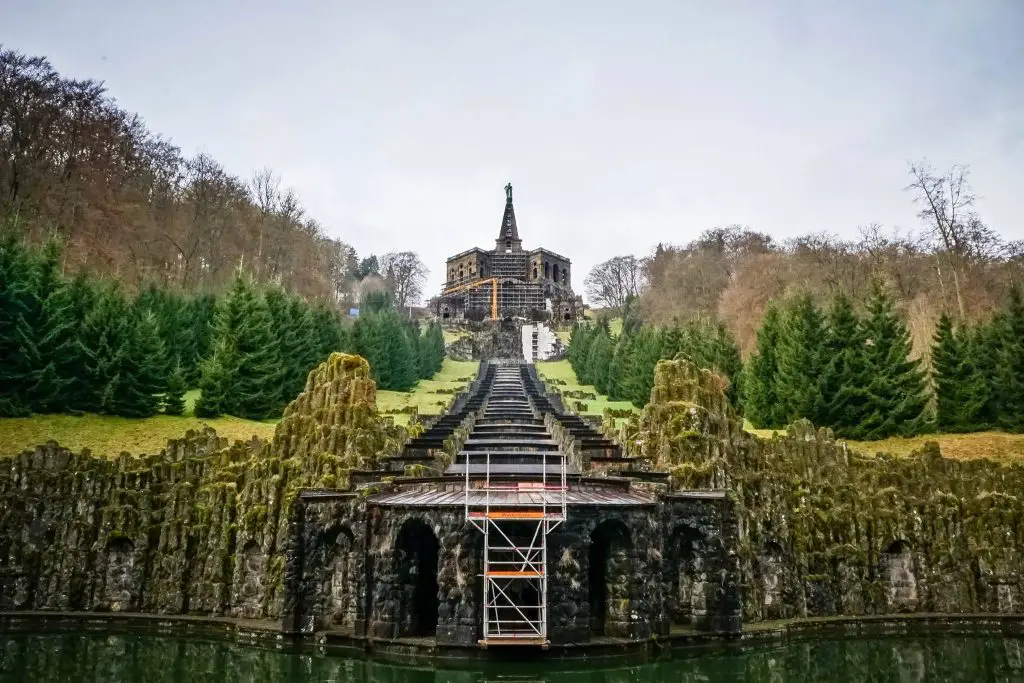
Beyond this, channels and waterways wind across the axis, feeding a series of dramatic waterfalls and wild rapids, the geyser-like Grand Fountain which leaps 50m high, the lake and secluded ponds that enliven the Romantic garden created in the 18th century by Carl’s great-grandson, Elector Wilhelm I.
The great size of the park and its waterworks along with the towering Hercules statue constitute an expression of the ideals of absolutist Monarchy while the ensemble is a remarkable testimony to the aesthetics of the Baroque and Romantic periods.
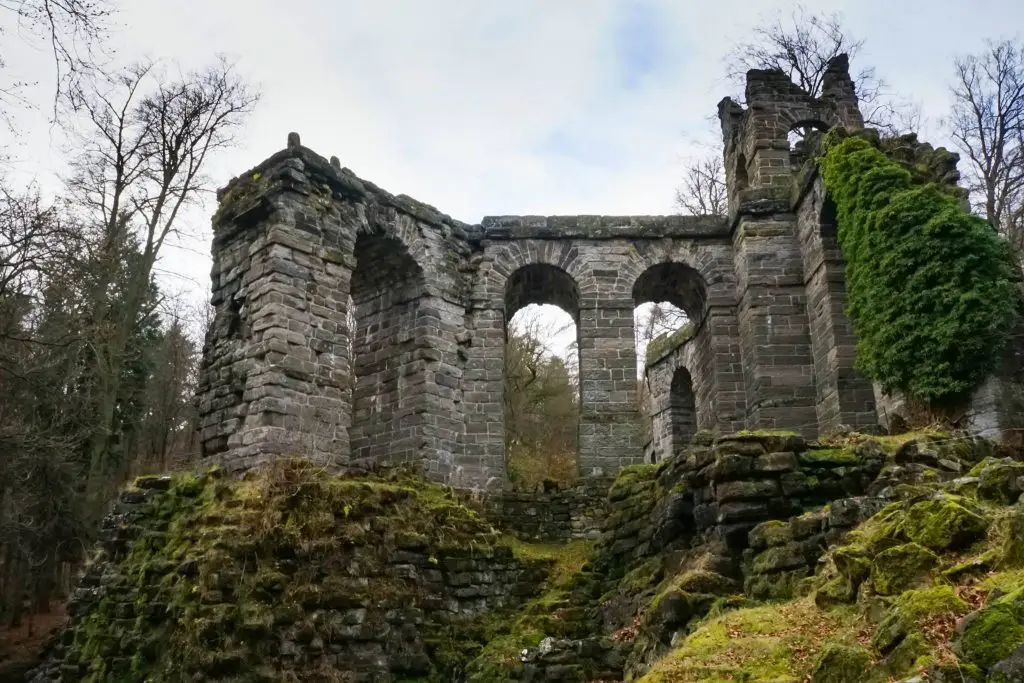
Eisenach
Such an incredible and historic castle that is well worth the hike!
Most famous for having been home to St. Elisabeth of Hungary, the place where Martin Luther translated the New Testament of the Bible into German, the site of the Wartburg festival of 1817 and the supposed setting for the legendary Sängerkrieg.
Wartburg Castle blends superbly into its forest surroundings and is in many ways ‘the ideal castle’. Although it has retained some original sections from the feudal period, the form it acquired during the 19th-century reconstitution gives a good idea of what this fortress might have been at the height of its military and seigneurial power.
It was during his exile at Wartburg Castle that Martin Luther translated the New Testament into German
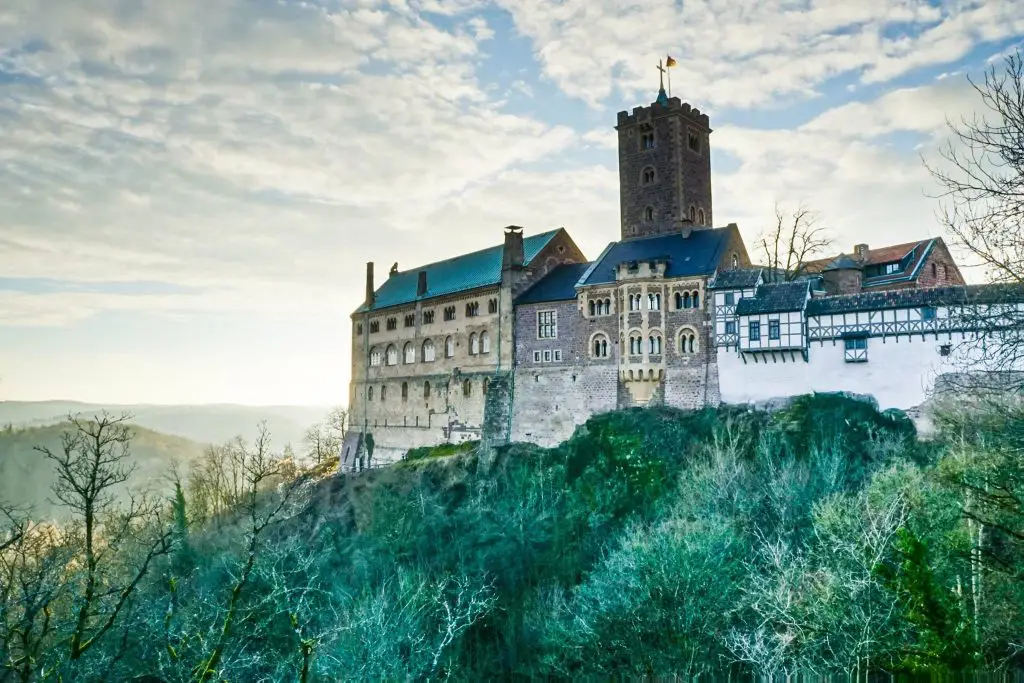
Weimar
The Graveyard of Weimar is meant to be a must do – It really isn’t though!
The Haus am Horn was built for the Weimar Bauhaus’s exhibition of July through September 1923 and is one of the original works of Bauhaus. The the goal of the house’s construction was “the greatest comfort with the greatest economy by the application of the best craftsmanship and the best distribution of space in form, size, and articulation.”
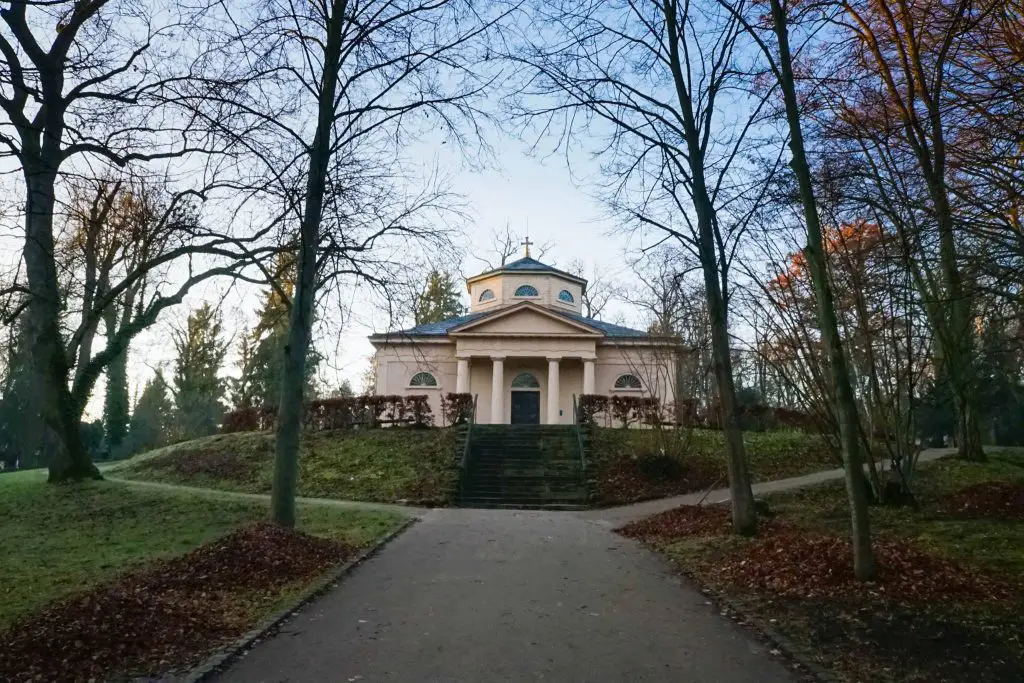
In the late 18th and early 19th centuries, the small Thuringian town of Weimar witnessed a remarkable cultural flowering, attracting many writers and scholars, notably Goethe and Schiller. This development is reflected in the high quality of many of the buildings and of the parks in the surrounding area.
Between 1919 and 1933 the Bauhaus movement revolutionized architectural and aesthetic thinking and practice in the 20th century. The Bauhaus buildings in Weimar, Dessau, and Bernau are fundamental representatives of Classical Modernism, directed towards a radical renewal of architecture and design.
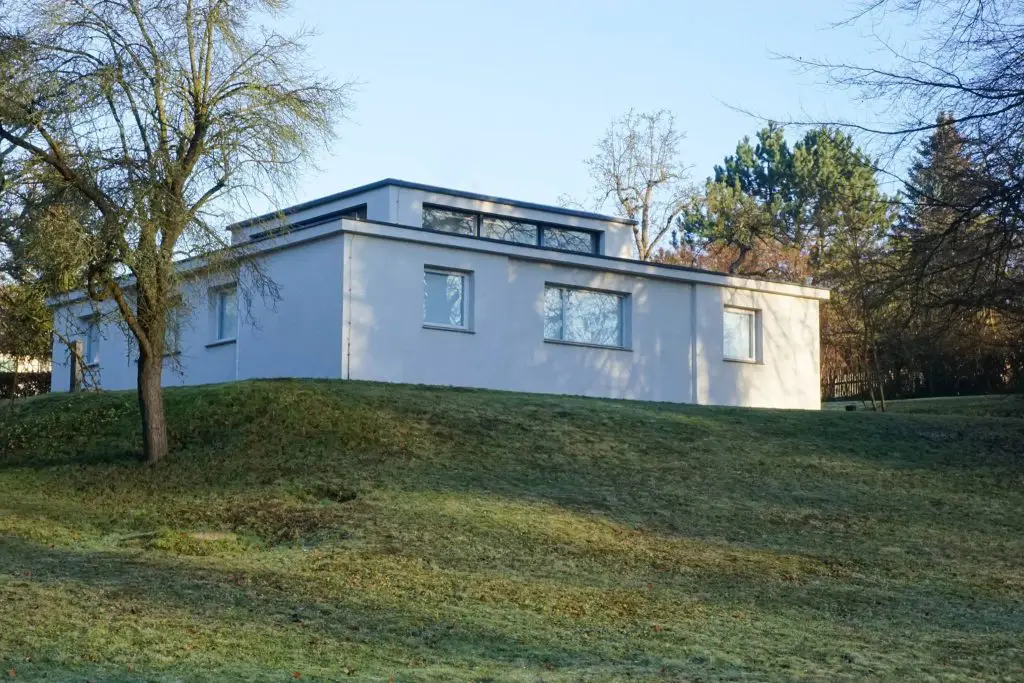
Dresden
Dresden is back and open for business!
One of the biggest, oldest and most beautiful Christmas markets in the whole of Germany is also in Dresden…Plus there was the unexpected highlight at sunset with birds flocking outside the Opera House.
Wish I had time to check out the inside!
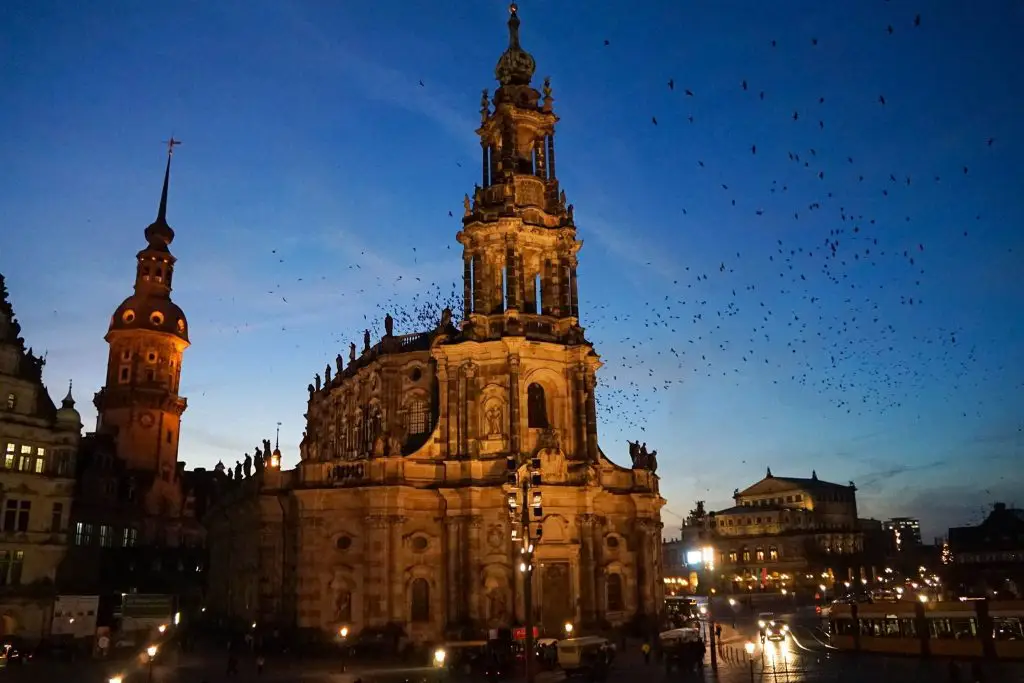
Würzburg
This magnificent Baroque palace – one of the largest and most beautiful in Germany and surrounded by wonderful gardens – was created under the patronage of the prince-bishops Lothar Franz and Friedrich Carl von Schönborn. It was built and decorated in the 18th century by an international team of architects, painters (including Tiepolo), sculptors and stucco-workers, led by Balthasar Neumann.
Imperial Grandeur – Even better on a nice sunny day! Though it is very small inside (well the part you can tour anyway)…
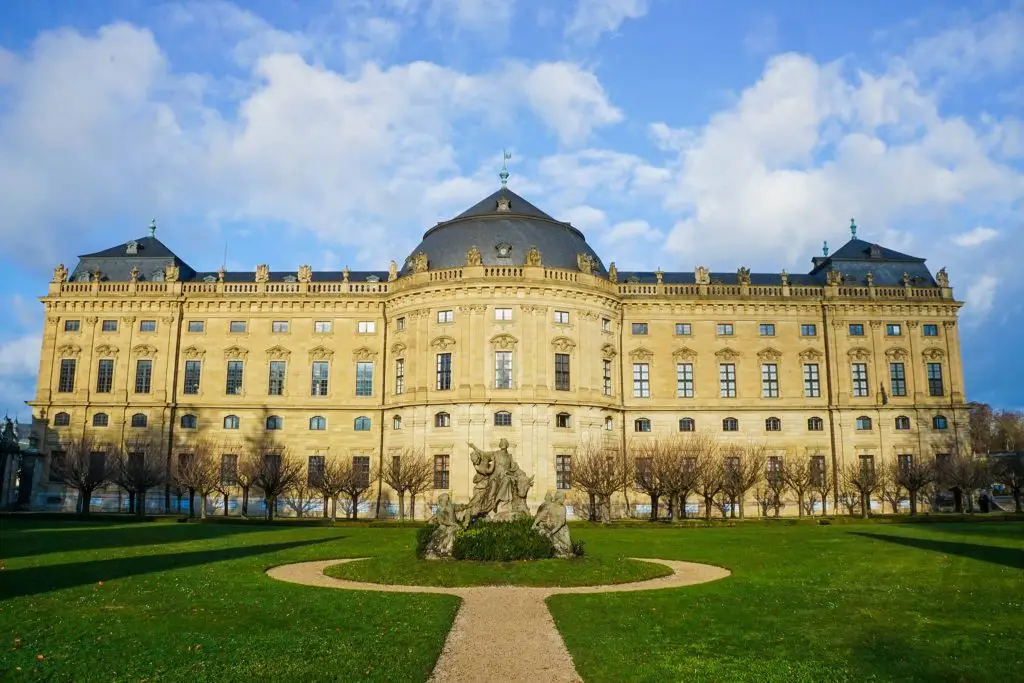
Bamberg
From the 10th century onwards, this town became an important link with the Slav peoples, especially those of Poland and Pomerania. During its period of greatest prosperity, from the 12th century onwards, the architecture of Bamberg strongly influenced northern German landmarks along with Hungary.
In the late 18th century it was the center of the Enlightenment in southern Germany, with eminent philosophers and writers such as Hegel and Hoffmann living there.
The gorgeous, historical old town of Bamberg – But really I found little to do here but walk around and was done in a few hours. It is a student town so maybe there is more at other times of the year?
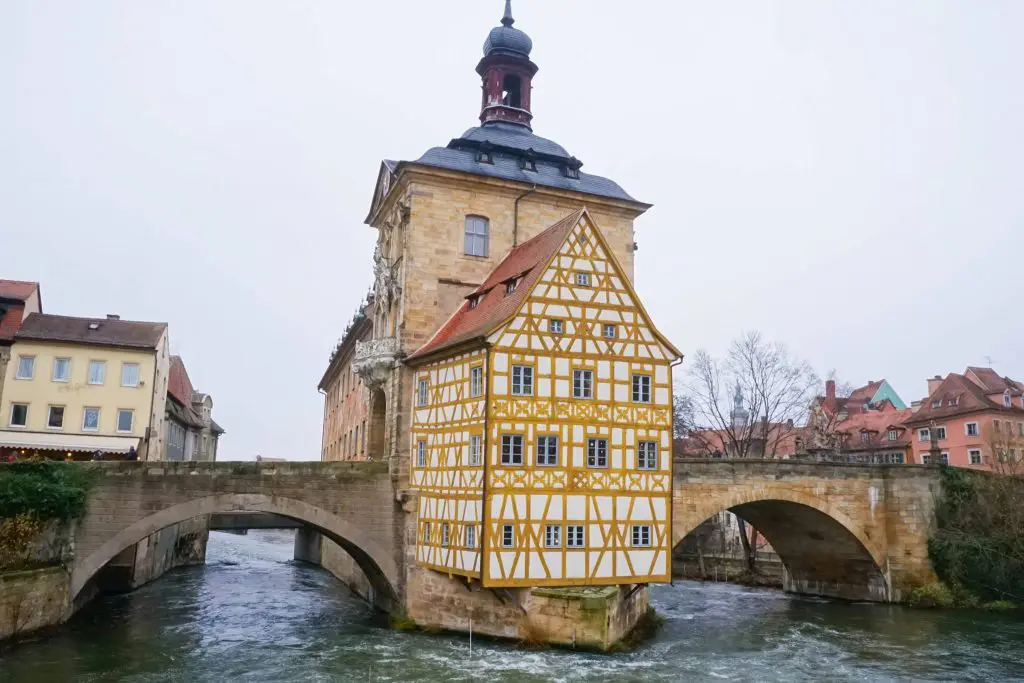
Regensburg
Located on the Danube River in Bavaria, this medieval town contains many buildings of exceptional quality that testify to its history as a trading center and to its influence on the region from the 9th century.
A notable number of historic structures span some two millennia and include ancient Roman, Romanesque and Gothic buildings. Regensburg’s 11th- to 13th-century architecture – including the market, city hall and cathedral – still defines the character of the town marked by tall buildings, dark and narrow lanes, and strong fortifications.

The buildings include medieval patrician houses and towers, a large number of churches and monastic ensembles as well as the 12th-century Old Bridge. The town is also remarkable for the vestiges testifying to its rich history as one of the centers of the Holy Roman Empire that turned to Protestantism.
One of the oldest bridges to cross the Danube and the first to be made of stone making it permanent and increasing the town’s prospects greatly!
And then there is the stunning Regensburg Cathedral which is a great place to sit in silence and in awe!
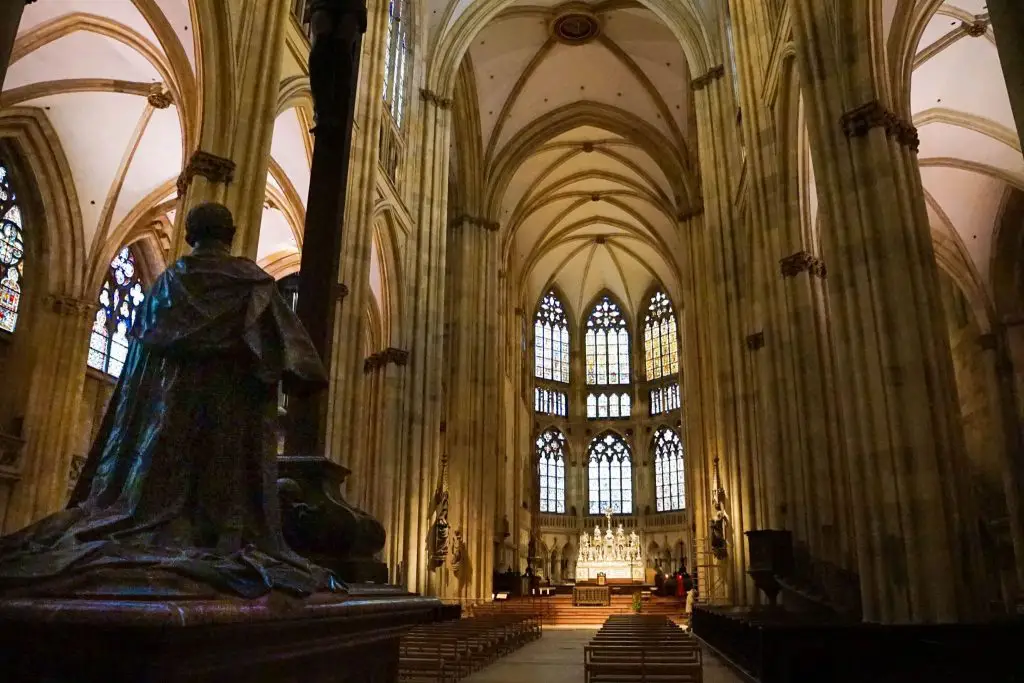
Neuschwanstein Castle
Of course, the big thing missing here is Neuschwanstein Castle which I am absolutely guttered I was not able to include in this trip.
No list of German Must See’s would be complete without it! Luckily however a year later I headed back to Germany for Oktoberfest like a local and was able to sneak in a day trip to Neuschwanstein Castle from Munich…Its was so worth it!
